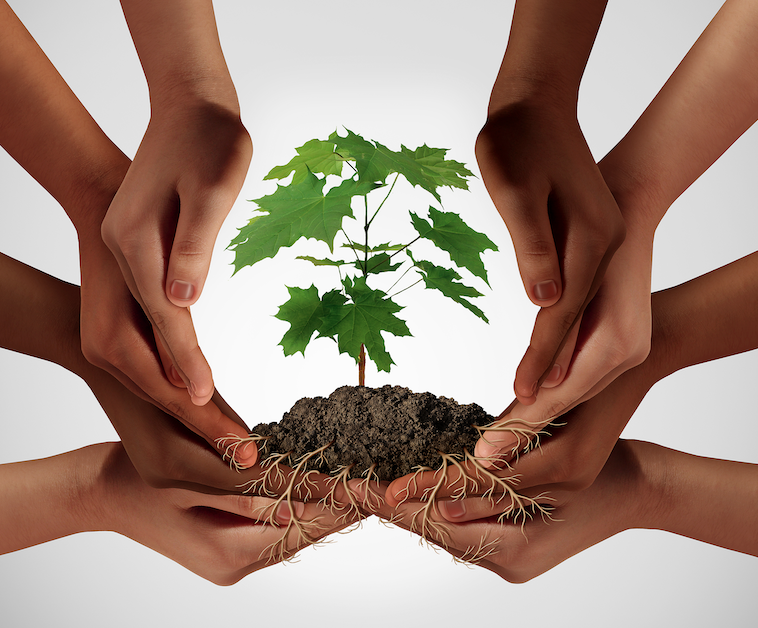Blog Contributor: Alexandra Cotrufo

It’s officially December, and if you haven’t already started, you’re probably getting ready to purchase holiday gifts for all your loved ones! The gift-giving season is an opportunity to show your appreciation for those who have been by your side throughout the year. While it’s fun to go out (or go online) and buy the perfect gifts for the people in your life, holiday consumerism has a negative impact on the health of the planet because we generate 30% more waste over the festive season.
Each year, the shopping frenzy seems to start earlier and earlier. This year, some retailers started marketing and displaying holiday gifts as early as September, with the reasoning being that gifts may take longer to arrive because of delays caused by COVID-19. While less money was spent on gifts last year due to gathering and shopping restrictions, Canadian holiday spending is expected to increase by 29% this year. The intention behind giving a gift is usually positive, but unfortunately, many gifts given during the holidays get prematurely thrown out and end up in landfills alongside excessive amounts of wrapping paper, tape, plastic, and decorations. In addition, the growing popularity of online shopping has resulted in more packaging waste and an increase in greenhouse gas emissions.
But there is good news! Consumers are becoming more aware of how their shopping habits can contribute to climate change, and 45% of Canadians who participated in a Price Waterhouse Coopers (PwC) survey said they are extremely likely to shop from socially and environmentally responsible retailers this year. If you’re looking to do the same, here is a gift guide of some sustainable and local products sure to bring a smile to anyone on your shopping list. If you’re interested in purchasing any of these gifts, and if it’s feasible, try shopping in-person rather than online to further reduce your carbon footprint. Also be sure to check out our previous blog post about tips for green gift giving!
1. Aija Candle Studio Soy Candle from Bioterra Eco Shop

Hand-poured in small batches in London, ON, Aija candles are made with 100% organic soy wax and are free of petroleum, lead, paraffin, pesticides, phthalate, and dyes. Bioterra Eco Shop is located in St. Catharines and helps fantastic, ethically made products find their way into the hearts of eco-conscious individuals.
2. Small Scale Farms Produce Box Subscription

Located in Allanburg, ON, Small Scale Farms offers a produce box service where you can buy a crateful of local fruits and vegetables as a one-time purchase or signup for their subscription service to receive a box on a weekly or monthly basis. In addition, for every subscription box sold, they donate one box to someone in need within the Niagara region.
3. Beechwood Doughnuts Gift Card

Beechwood Doughnuts is Niagara’s first and only 100% vegan doughnut shop. Located in the heart of Downtown St. Catharines, Beechwood Doughnuts proves that plant-based foods can be just as delicious as they are compassionate. Beechwood is a proud partner of YWCA Niagara Region and an Ontario Living Wage Employer.
4. Rise Above Restaurant & Bakery Gift Card

Rise Above is Niagara’s first 100% vegan restaurant and bakery and is located just minutes from Brock’s main campus! They specialize in delicious comfort foods, healthy choices, and fresh baked desserts.
5. {pocket}CHANGE Blue & Tan Waffle Weave Scarf

This local shop was created to support artisans in the St. Catharines community. A portion of every purchase, such as the purchase of this fair-trade and handmade scarf, is donated to organizations working to improve health and wellness, education, and the environment.

Guess Where Trips is run by female Canadians who create exciting itineraries that allow travelers to discover new places across Ontario they would have never seen before. They even have some local trips within the Niagara Region! Be sure to reach out to the extremely kind business owners for details on local trips. (Tip: opt for the PDF version of the trip itinerary to save on packaging and delivery emissions!)
A final note to remember during this holiday season: while gift-giving can be a fun experience for many, it can also be an incredibly stressful time for others. Several factors such as cost, expectations to get the perfect gift, and large shopping crowds among others can make it difficult to purchase gifts. It’s important to remember that sometimes, the best gifts are priceless experiences which make memories that will last far beyond the lifespan of a materialistic gift. If you can’t afford to buy a gift this year, try making one with materials you have readily available to you or organize an excursion to a nearby town! There are plenty of ways to give joy this holiday season without adding stress to you or the environment.























